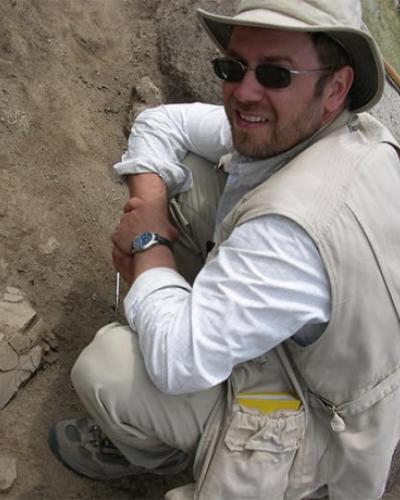My research has long been shaped by an interest in how our material world—that vast array of landscapes and places, objects and things that shadow our every move—shapes our past, present, and future. Hence my interest in archaeology, as the discipline of things, was set within an abiding fascination with the forces that shape our social, and particularly our political, lives. My interest in the archaeology of political life developed while studying for an MPhil in Cambridge University’s Faculty of Social and Political Thought. There, I became concerned by the limitations imposed on our understanding of politics by an abiding interest in abstract Goods (with a capital ‘G’, such as justice, order, etc.) absent the dense array of goods (with a lower case ‘g’) critical to the polity.
In 1992, as a starting graduate student at the University of Arizona, I had the serendipitous fortune to take part in a fledgling new archaeological project in the newly-independent Republic of Armenia. The Soviet Union had been officially dissolved just six months prior to my arrival and Armenia was beset by myriad hardships (a running joke that year was that Marx and Lenin had just left when Adam Smith arrived). Yet despite the social, economic, and political disarray that gripped the entire region, Armenia and the Caucasus as a whole presented a remarkable opportunity to not only address my interest in the object matter of political life but to also help bring to light understudied but vitally important chapters in humanity’s past.
Since that time, the research project that my Armenian colleagues and I founded (known as Project ArAGATS) has grown into the region’s most enduring and impactful archaeological program, training generations of scholars from Armenia and the US. In addition, the charitable arm of this research, The Aragats Foundation, is now working to leverage the results of archaeological research to the lasting benefit of interested local stakeholders.
My investigations in Armenia have stimulated two related books concerned with the political impact of our places and things: The Political Landscape: Constellations of Authority in Early Complex Polities (California, 2003) and The Political Machine: Assembling Sovereignty in the Bronze Age Caucasus (Princeton 2015). In addition, the work of Project ArAGATS has been reported in a number of articles and a book series. The first volume of our reports, entitled The Archaeology and Geography of Ancient Transcaucasian Societies, volume I: Regional Investigations in the Tsaghkahovit Plain, Armenia was published by the Oriental Institute Press in 2009. Volume 2 is now in preparation.





